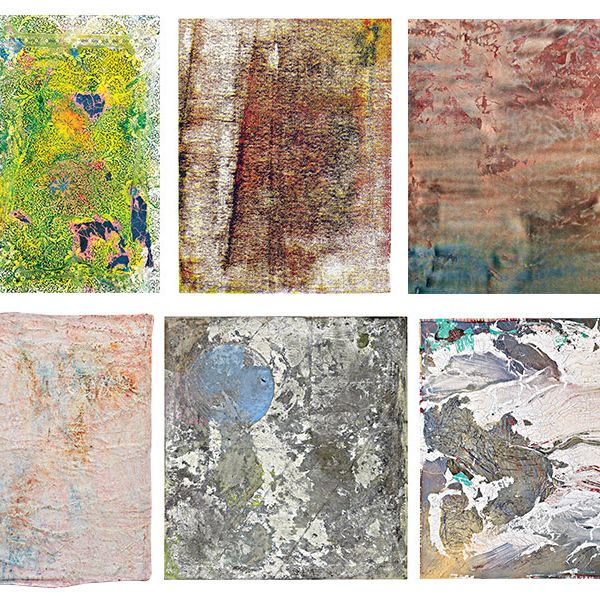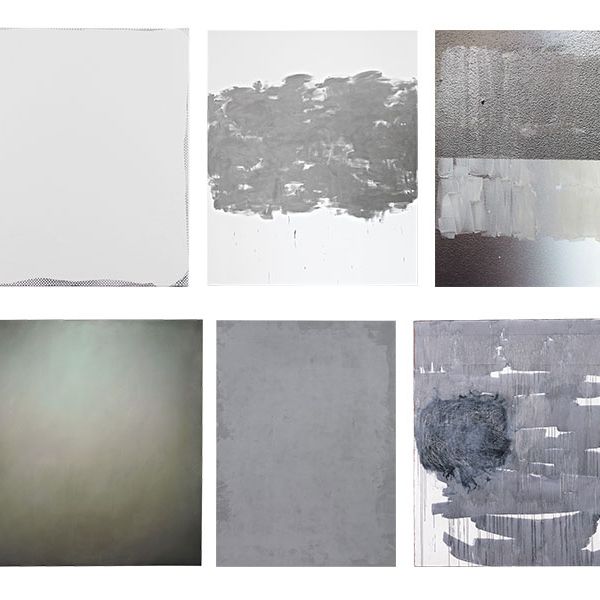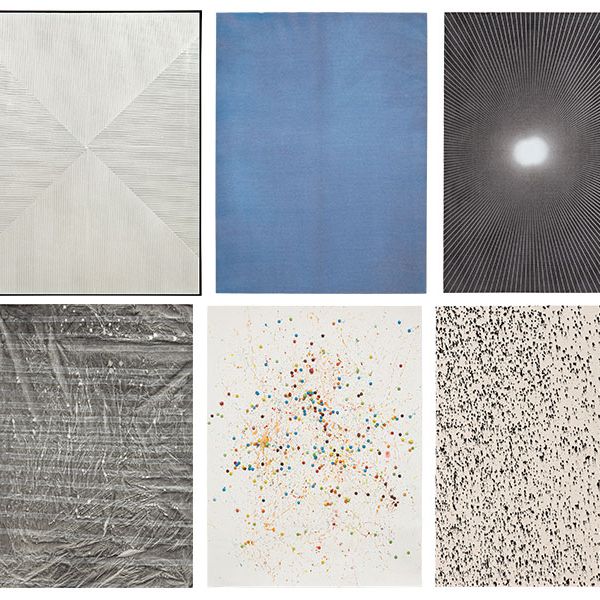Zombies on the Walls: Why Does So Much New Abstraction Look the Same?
For the past 150 years, pretty consistently, art movements moved in thrilling but unmysterious ways. They’d build on the inventions of several extraordinary artists or constellations of artists, gain followings, become what we call a movement or a school, influence everything around them, and then become diluted as they were taken up by more and more derivative talents. Soon younger artists would rebel against them, and the movement would fade out. This happened with Impressionism, Postimpressionism, and Fauvism, and again with Abstract Expressionism after the 1950s. In every case, always, the most original work led the way.
Now something’s gone terribly awry with that artistic morphology. An inversion has occurred. In today’s greatly expanded art world and art market, artists making diluted art have the upper hand. A large swath of the art being made today is being driven by the market, and specifically by not very sophisticated speculator-collectors who prey on their wealthy friends and their friends’ wealthy friends, getting them to buy the same look-alike art.
The artists themselves are only part of the problem here. Many of them are acting in good faith, making what they want to make and then selling it. But at least some of them are complicit, catering to a new breed of hungry, high-yield risk-averse buyers, eager to be part of a rapidly widening niche industry. The ersatz art in which they deal fundamentally looks the way other art looks. It’s colloquially been called Modest Abstraction, Neo-Modernism, M.F.A. Abstraction, and Crapstraction. (The gendered variants are Chickstraction and Dickstraction.) Rhonda Lieberman gets to the point with “Art of the One Percent” and “aestheticized loot.” I like Dropcloth Abstraction, and especially the term coined by the artist-critic Walter Robinson: Zombie Formalism.
Galleries everywhere are awash in these brand-name reductivist canvases, all more or less handsome, harmless, supposedly metacritical, and just “new” or “dangerous”-looking enough not to violate anyone’s sense of what “new” or “dangerous” really is, all of it impersonal, mimicking a set of preapproved influences. (It’s also a global presence: I saw scads of it in Berlin a few weeks back, and art fairs are inundated.) These artists are acting like industrious junior postmodernist worker bees, trying to crawl into the body of and imitate the good old days of abstraction, deploying visual signals of Suprematism, color-field painting, minimalism, post-minimalism, Italian Arte Povera, Japanese Mono-ha, process art, modified action painting, all gesturing toward guys like Polke, Richter, Warhol, Wool, Prince, Kippenberger, Albert Oehlen, Wade Guyton, Rudolf Stingel, Sergej Jensen, and Michael Krebber. I’ve photographed hundreds of examples this year, at galleries and art fairs, and a sampling appears on these pages.
This work is decorator-friendly, especially in a contemporary apartment or house. It feels “cerebral” and looks hip in ways that flatter collectors even as it offers no insight into anything at all. It’s all done in haggard shades of pale, deployed in uninventive arrangements that ape digital media, or something homespun or dilapidated. Replete with self-conscious comments on art, recycling, sustainability, appropriation, processes of abstraction, or nature, all this painting employs a similar vocabulary of smudges, stains, spray paint, flecks, spills, splotches, almost-monochromatic fields, silk-screening, or stenciling. Edge-to-edge, geometric, or biomorphic composition is de rigueur, as are irregular grids, lattice and moiré patterns, ovular shapes, and stripes, with maybe some collage. Many times, stretcher bars play a part. This is supposed to tell us, “See, I know I’m a painting—and I’m not glitzy like something from Takashi Murakami and Jeff Koons.” Much of this product is just painters playing scales, doing finger exercises, without the wit or the rapport that makes music. Instead, it’s visual Muzak, blending in.
Most Zombie Formalism arrives in a vertical format, tailor-made for instant digital distribution and viewing via jpeg on portable devices. It looks pretty much the same in person as it does on iPhone, iPad, Twitter, Tumblr, Pinterest, and Instagram. Collectors needn’t see shows of this work, since it offers so little visual or material resistance. It has little internal scale, and its graphic field is taken in at once. You see and get it fast, and then it doesn’t change. There are no complex structural presences to assimilate, few surprises, and no unique visual iconographies or incongruities to come to terms with. It’s frictionless, made for trade. Art as bitcoin.
Almost everyone who paints like this has come through art school. Thus the work harks back to the period these artists were taught to lionize, the supposedly purer days of the 1960s and 1970s, when their teachers’ views were being formed. Both teachers and students zero in on this one specific period; then only on one type of art of this period; then only on certain artists. It’s art-historical clear-cutting, aesthetic monoculture with no aesthetic biodiversity. This is not painting but semantic painterbation—what an unctuous auction catalogue, in reference to one artist’s work, recently called “established postmodern praxis.”
Apologists offer convoluted defenses, saying that certain practitioners differ from all the others. Lucien Smith uses fire extinguishers to make his little drips; Dan Colen uses M&Ms for his; Adam McEwen deploys chewing gum; Parker Ito paints fields of hazy colored dots. There are many artists who make art that looks printed but is handmade; others make it look handmade when it’s printed. We’re told that a painting is made by cutting up other paintings, or that it was left outdoors or in a polluted lake or sent through the mail, or that it came from Tahrir Square. We hear that the artist is “commenting on” commodity culture, climate change, social oppression, art history. One well-known curator tried recently to justify the splattered Julian Schnabel–Joe Bradley–Jean-Michel Basquiat manqué of Oscar Murillo—the hottest of all these artists—by connecting his tarp- or tentlike surfaces to the people living under makeshift canvas shelters in Murillo’s native Colombia. Never mind that he was educated in England and largely grew up there. At 28, obviously talented, Murillo’s still making his student work and could turn out to be great. Regardless, so many buyers and sellers are already so invested in him that everyone’s trying to cover his or her position. In one day at Frieze last month, three major art dealers pulled me aside to say that, although they agreed that we’re awash in Crapstraction, their artist was “the real deal.” I told each dealer what the other had said to me, and that each had named a different hot artist.
I’ll admit that I don’t hate all of this work. Frankly, I like some of it. The saddest part of this trend is that even better artists who paint this way are getting lost in the onslaught of copycat mediocrity and mechanical art. Going to galleries is becoming less like venturing into individual arks and more like going to chain stores where everything looks familiar. My guess is that, if and when money disappears from the art market again, the bottom will fall out of this genericism. Everyone will instantly stop making the sort of painting that was an answer to a question that no one remembers asking—and it will never be talked about again.
*This article appears in the June 16, 2014 issue of New York Magazine.
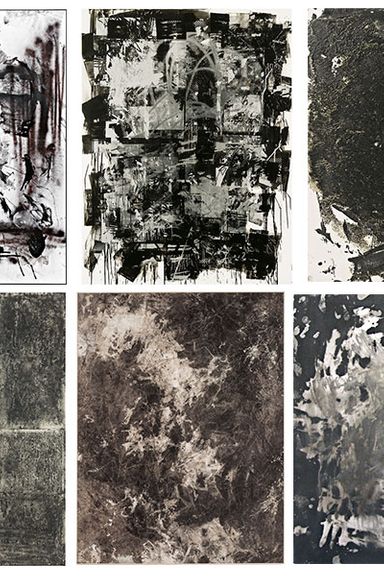
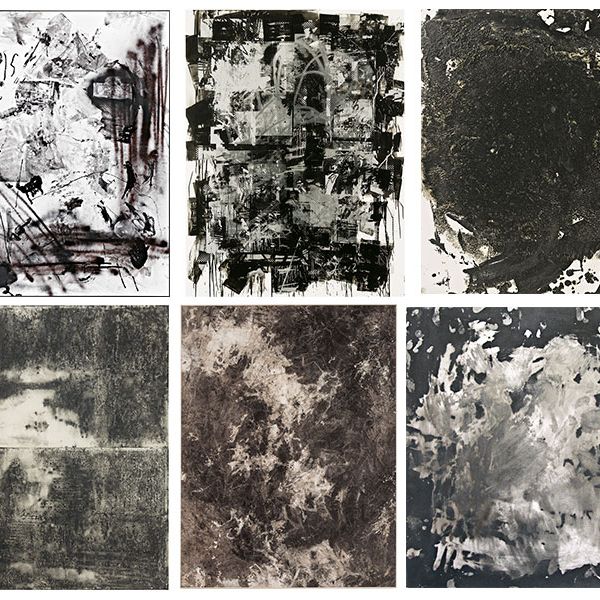
Top row, from left: All You Hear Is Beads Rattling (2012), by Leo Gabin; Untitled #0904 (2009), by John Bauer; Untitled (JS06198) (2006), by Josh Smit...
Top row, from left: All You Hear Is Beads Rattling (2012), by Leo Gabin; Untitled #0904 (2009), by John Bauer; Untitled (JS06198) (2006), by Josh Smith. Bottom row: ST-AA (Transfer Series) (2013), by Angel Otero; Big Squid Ink (2014), by Jamie Sneider; I (2011), by Rosy Keyser.
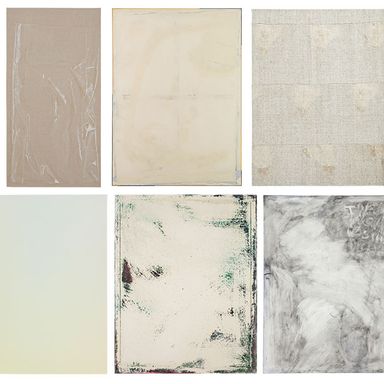
Top row, from left: Plastic Sheeting (2012), by Helene Appel; F (A Thing Is a Thing in a Whole Which It’s Not) (2012), by David Ostrowski; Untitled (2...
Top row, from left: Plastic Sheeting (2012), by Helene Appel; F (A Thing Is a Thing in a Whole Which It’s Not) (2012), by David Ostrowski; Untitled (2005), by Sergej Jensen. Bottom row: Untitled (Indiscretion 2) (2013), by Scott Lyall; Waterhome Screen AQ (2013), by James Krone; Graphite Girlfriend (2012), by Nick Darmstaedter.
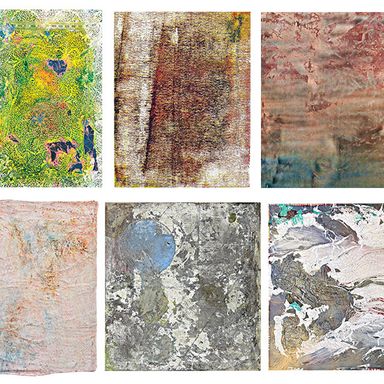
Top row, from left: Pleasure Island (2009), by Mark Flood; Untitled (2013), by Israel Lund; The Agony and the Ecstasy (2012), by Parker Ito. Bottom ro...
Top row, from left: Pleasure Island (2009), by Mark Flood; Untitled (2013), by Israel Lund; The Agony and the Ecstasy (2012), by Parker Ito. Bottom row: Magnum Opus (2013), by Jay Heikes; Untitled (2010), by Oscar Murillo; June 3, 2012 – June 22, 2012 (2012), by Ryan Sullivan.
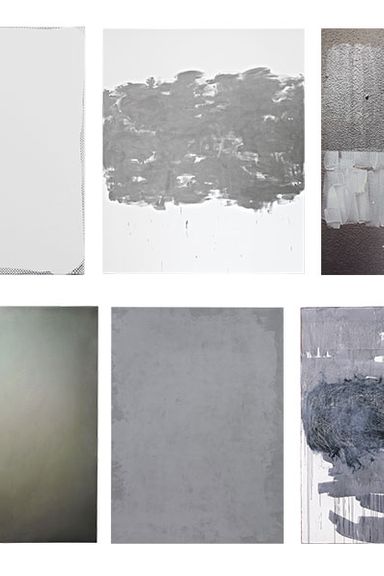
Top row, from left: Untitled (The Skin I Live In) 12 (2013), by Antonia Gurkovska; Stainless Steel (Fine) XIII (2011), by Gardar Eide Einarsson; Untit...
Top row, from left: Untitled (The Skin I Live In) 12 (2013), by Antonia Gurkovska; Stainless Steel (Fine) XIII (2011), by Gardar Eide Einarsson; Untitled (2011), by Nathan Hylden. Bottom row: Marshall Head (Void) (2012), by Louis Eisner; Colossal Head (2007), by Joe Bradley; Blue Eye (2008), by Charline von Heyl.
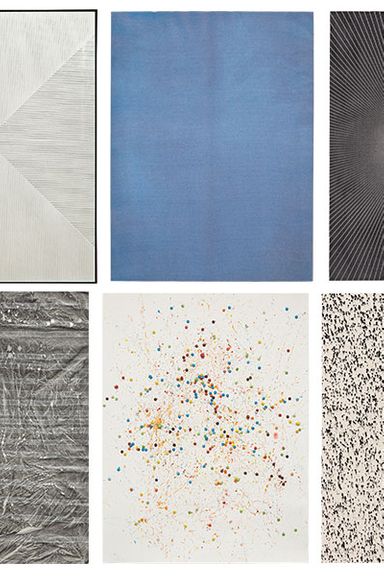
Top row, from left: Untitled (2010), by Ned Vena; Untitled (2011), by Hugh Scott-Douglas; Spine, Chapter 20 (Silberkuppe) (2010), by R.H. Quaytman. Bo...
Top row, from left: Untitled (2010), by Ned Vena; Untitled (2011), by Hugh Scott-Douglas; Spine, Chapter 20 (Silberkuppe) (2010), by R.H. Quaytman. Bottom row: Bleach Bum (2011), by Sam Moyer; To Be Titled (2011), by Dan Colen; The Lady Eve (2012), by Lucien Smith.
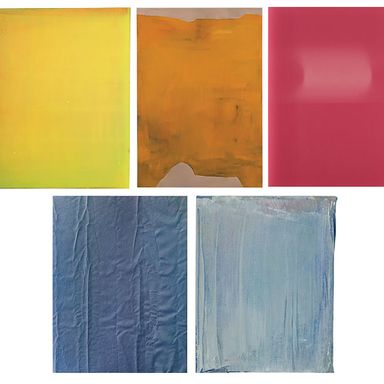
Top row, from left: Untitled (2010), by Markus Amm; Untitled (2013), by Stef Driesen; Roll Fades (2012), by Sam Falls. Bottom row: Untitled (Fold) (20...
Top row, from left: Untitled (2010), by Markus Amm; Untitled (2013), by Stef Driesen; Roll Fades (2012), by Sam Falls. Bottom row: Untitled (Fold) (2011), by Tauba Auerbach; Untitled (2013), by David Keating.

